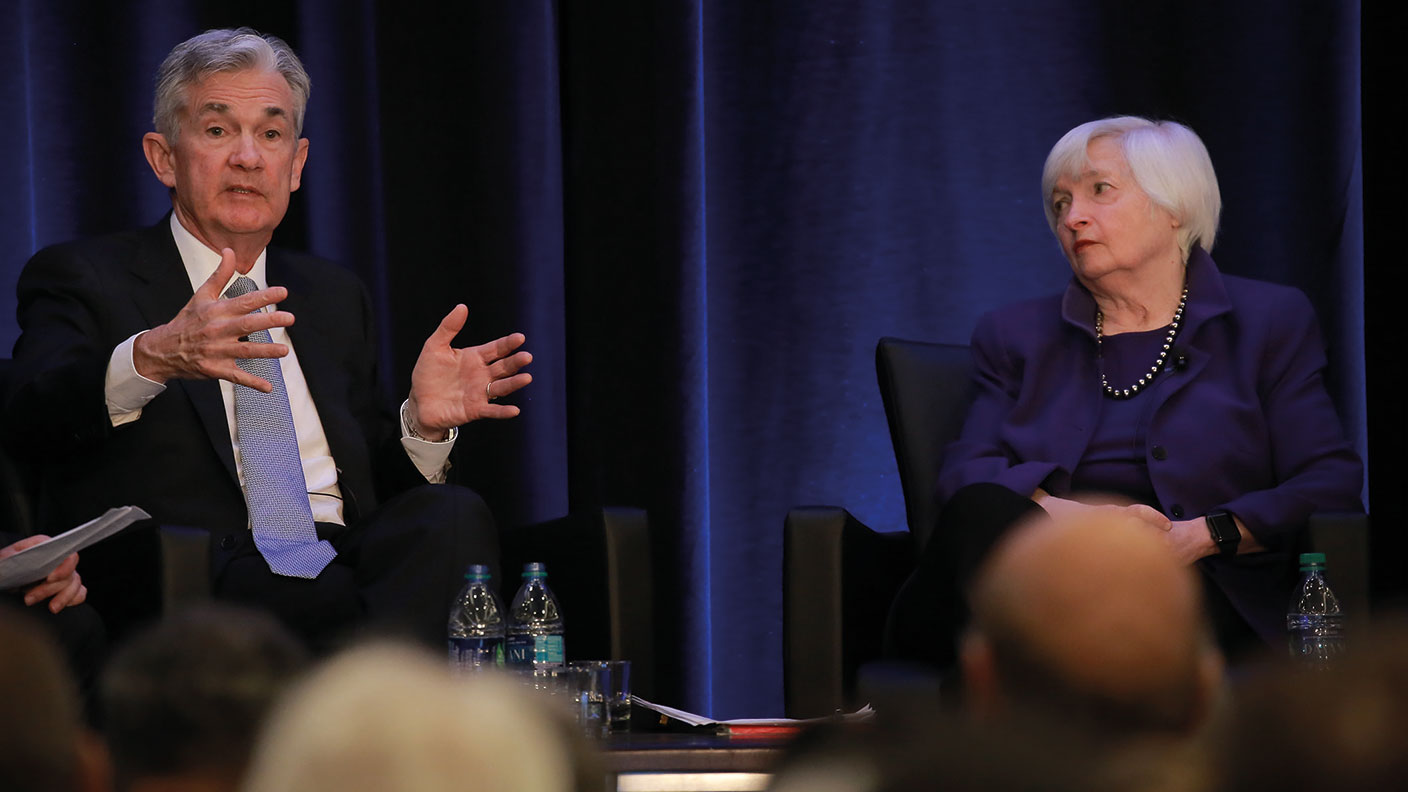US stockmarket bubble just keeps getting bigger
Despite the shine coming off tech stocks this week, valuations have been boosted by loose money and government spending.

Could US stocks be heading for their very own “1980s-style Japanese melt-up”? asks Ian Harnett in the Financial Times. The dovish duo of Janet Yellen at the Treasury and Jerome Powell at the US Federal Reserve are boosting valuations by drenching markets with loose money and state spending.
The market’s current valuation philosophy is “basically to ignore it”, says Eric Savitz in Barron’s. The likes of Zoom Video Communications and Shopify trade on more than 35 times estimated sales – sales, not profits. Yet an end to the pandemic, which will let us spend more time away from the internet, is starting to take the shine off tech stocks.
The tech-heavy Nasdaq 100 is down more than 4% since a recent high on 12 February. The parallels with the dotcom bubble are multiplying, says James Mackintosh in The Wall Street Journal. In the late 1990s any share with “dotcom” in its name could be expected to rally whether it was an internet business or not.
MoneyWeek
Subscribe to MoneyWeek today and get your first six magazine issues absolutely FREE

Sign up to Money Morning
Don't miss the latest investment and personal finances news, market analysis, plus money-saving tips with our free twice-daily newsletter
Don't miss the latest investment and personal finances news, market analysis, plus money-saving tips with our free twice-daily newsletter
Today investors pile into “story stocks”: witness the recent jump in biotech firm Signal Advance, which speculators had mistaken for WhatsApp-style messenger service Signal. Yet there is one big difference from the dotcom bubble: this time the Fed “has the market’s back” and remains committed to keeping interest rates low. That means these pricey valuations rest on more than just speculative froth.
“All history’s... speculative bubbles” have been fuelled by “cheap money”, says John Authers on Bloomberg. They usually only pop when monetary conditions are tightened (Japan’s asset-price implosion came after the central bank began hiking interest rates in 1989). With the Fed intent on keeping money ultra-loose for the foreseeable future that reckoning – and the “bubble’s final paroxysm” –may still “be months away”
Get the latest financial news, insights and expert analysis from our award-winning MoneyWeek team, to help you understand what really matters when it comes to your finances.
Alex is an investment writer who has been contributing to MoneyWeek since 2015. He has been the magazine’s markets editor since 2019.
Alex has a passion for demystifying the often arcane world of finance for a general readership. While financial media tends to focus compulsively on the latest trend, the best opportunities can lie forgotten elsewhere.
He is especially interested in European equities – where his fluent French helps him to cover the continent’s largest bourse – and emerging markets, where his experience living in Beijing, and conversational Chinese, prove useful.
Hailing from Leeds, he studied Philosophy, Politics and Economics at the University of Oxford. He also holds a Master of Public Health from the University of Manchester.
-
 Rightmove: Asking prices set to rise 2% in 2026 after post-Budget market rebound
Rightmove: Asking prices set to rise 2% in 2026 after post-Budget market reboundBuyers and sellers who held off in anticipation of the Budget will come back to the market and contribute to asking prices increasing next year, according to Rightmove
-
 Coreweave is on borrowed time
Coreweave is on borrowed timeAI infrastructure firm Coreweave is heading for trouble and is absurdly pricey, says Matthew Partridge
-
 Coreweave is on borrowed time
Coreweave is on borrowed timeAI infrastructure firm Coreweave is heading for trouble and is absurdly pricey, says Matthew Partridge
-
 Renewable energy funds are stuck between a ROC and a hard place
Renewable energy funds are stuck between a ROC and a hard placeRenewable energy funds were hit hard by the government’s subsidy changes, but they have only themselves to blame for their failure to build trust with investors
-
 Profit from document shredding with Restore
Profit from document shredding with RestoreRestore operates in a niche, but essential market. The business has exciting potential over the coming years, says Rupert Hargreaves
-
 The war dividend – how to invest in defence stocks as the world arms up
The war dividend – how to invest in defence stocks as the world arms upWestern governments are back on a war footing. Investors should be prepared, too, says Jamie Ward
-
 Literacy Capital: A trust where great returns fund a good cause
Literacy Capital: A trust where great returns fund a good causeThere’s plenty to like about specialist private-equity trust Literacy Capital, says Max King
-
 An AI bust could hit private credit – could it cause a financial crisis?
An AI bust could hit private credit – could it cause a financial crisis?Opinion Private credit is playing a key role in funding data centres. It may be the first to take the hit if the AI boom ends, says Cris Sholto Heaton
-
 8 of the best ski chalets for sale now
8 of the best ski chalets for sale nowThe best ski chalets on the market – from a traditional Alpine-style chalet in Switzerland to an award-winning Modernist building in Japan’s exclusive ski areas
-
 Did COP30 achieve anything to tackle climate change?
Did COP30 achieve anything to tackle climate change?The COP30 summit was a failure. But the world is going green regardless, says Simon Wilson